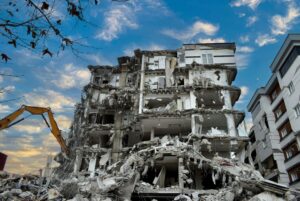Building Organizational Resilience Before Crisis Strikes


Organizational resilience is more than the ability to bounce back after disruptions; it is the capacity to anticipate, adapt, and emerge stronger when facing adversity. In a world where crises can arise from natural disasters, cyberattacks, financial instability, or reputational threats, resilience is no longer optional—it is essential for survival. Building resilience before a crisis strikes ensures that organizations not only withstand shocks but also maintain stability and protect stakeholders.
Understanding Organizational Resilience
Organizational resilience is the foundation of long-term sustainability. It involves creating structures, policies, and a culture that allow a company to remain functional and relevant, regardless of unexpected challenges. Instead of focusing solely on reactive measures, resilient organizations emphasize preparation and adaptability. This mindset allows them to respond with agility rather than panic when disruptions occur.
Resilience also extends beyond operational continuity. It involves protecting employee well-being, preserving customer trust, and maintaining reputation. When organizations build resilience holistically, they can safeguard not just profits but also relationships, credibility, and the confidence of the communities they serve.
Leadership Commitment and Vision
Leadership plays a pivotal role in shaping organizational resilience. Executives and managers must model preparedness by embedding resilience into corporate strategy. Without leadership commitment, resilience efforts often remain surface-level initiatives that fail under real stress. Leaders who prioritize resilience inspire their teams to adopt the same values and practices.
Vision is equally important. Leaders must articulate a clear direction that strikes a balance between day-to-day operations and long-term security. By creating strategies that integrate flexibility, resource management, and proactive planning, leaders help their organizations move beyond survival mode into a culture of preparedness.
Risk Assessment and Scenario Planning
A strong resilience strategy begins with understanding potential risks. Risk assessments allow organizations to identify vulnerabilities—whether related to technology, supply chains, or human resources. This evaluation is not static; it must be revisited regularly to account for evolving threats and industry changes.
Scenario planning takes risk assessment a step further. By simulating potential crises such as market downturns or natural disasters, organizations can test their response strategies and uncover hidden gaps. These exercises ensure that when an actual crisis arises, decision-makers are not reacting blindly but are instead following rehearsed, well-considered plans.
Building a Culture of Adaptability
Resilience cannot exist without adaptability. A rigid, hierarchical organization may struggle to pivot during emergencies, while flexible cultures thrive under pressure. Building adaptability means encouraging innovation, open communication, and a willingness to learn from mistakes. Employees should feel empowered to propose solutions and make quick decisions within their roles.
Adaptability also requires organizations to adopt a culture of continuous learning. After every disruption, leaders and employees should analyze what worked and what failed. Embedding this feedback loop into company culture transforms challenges into opportunities for growth, strengthening resilience over time.
Strengthening Communication Systems
Clear communication is the backbone of resilience. In times of crisis, confusion and misinformation can spread quickly, undermining recovery efforts. Organizations must invest in communication systems that are reliable, multi-channel, and accessible to all stakeholders. These systems should be regularly tested to ensure effectiveness.
Equally important is transparency. During disruptions, employees, customers, and partners want accurate information quickly. Honest communication—even when the news is difficult—builds trust and prevents rumors from taking hold. By prioritizing clarity and timeliness, organizations reduce panic and support coordinated responses.
Empowering Employees and Teams
Resilience is not the responsibility of leadership alone; it requires participation from every level of the organization. Employees should be trained to handle disruptions confidently and equipped with the resources necessary to adapt quickly. Training programs and regular drills foster readiness and reduce uncertainty.
Empowering employees also means valuing their insights. Teams closest to daily operations often have the most precise understanding of potential weaknesses. Encouraging feedback and collaboration ensures that resilience strategies reflect real-world challenges and practical solutions. When employees feel included, they are more committed to executing resilience plans effectively.
Leveraging Technology and Innovation
Technology is both a source of vulnerability and a tool for resilience. Cybersecurity threats, system failures, and data breaches can cripple unprepared organizations. However, leveraging the right technologies can also significantly strengthen resilience. Automated backup systems, cloud storage, and cybersecurity protocols help safeguard critical assets.
Innovation plays an equally vital role. Organizations that embrace digital transformation and emerging tools are better equipped to adapt to change. Artificial intelligence, predictive analytics, and real-time monitoring systems allow leaders to anticipate crises before they escalate, positioning the organization for proactive rather than reactive responses.
Financial Preparedness and Resource Management
No resilience strategy is complete without financial preparedness. Crises often place enormous strain on resources, and organizations without contingency funds may collapse under pressure. Maintaining emergency reserves and diversifying revenue streams protects against financial shocks.
Effective resource management extends beyond finances. It includes ensuring backup suppliers, flexible logistics, and accessible inventory. Organizations that manage resources strategically are better positioned to weather disruptions without severe operational setbacks.
Building External Partnerships
Resilient organizations do not operate in isolation. External partnerships with suppliers, local authorities, industry associations, and even competitors can enhance crisis response. Collaborative networks provide access to resources and knowledge that may not be available internally.
Partnerships also strengthen community trust. Organizations that engage with local communities and public institutions demonstrate responsibility and reliability. This goodwill often translates into stronger support during crises, creating a mutually beneficial safety net.
Continuous Improvement and Post-Crisis Learning
Resilience is not a one-time achievement; it is an ongoing process. After a crisis, organizations must analyze their performance and identify areas for improvement. This requires honest reflection and openness to change. Post-crisis learning ensures that mistakes are not repeated and that future disruptions are better managed.
Continuous improvement also requires updating policies, training programs, and technologies to match evolving risks. By institutionalizing this learning process, organizations create a cycle of resilience that grows stronger with each challenge encountered.





